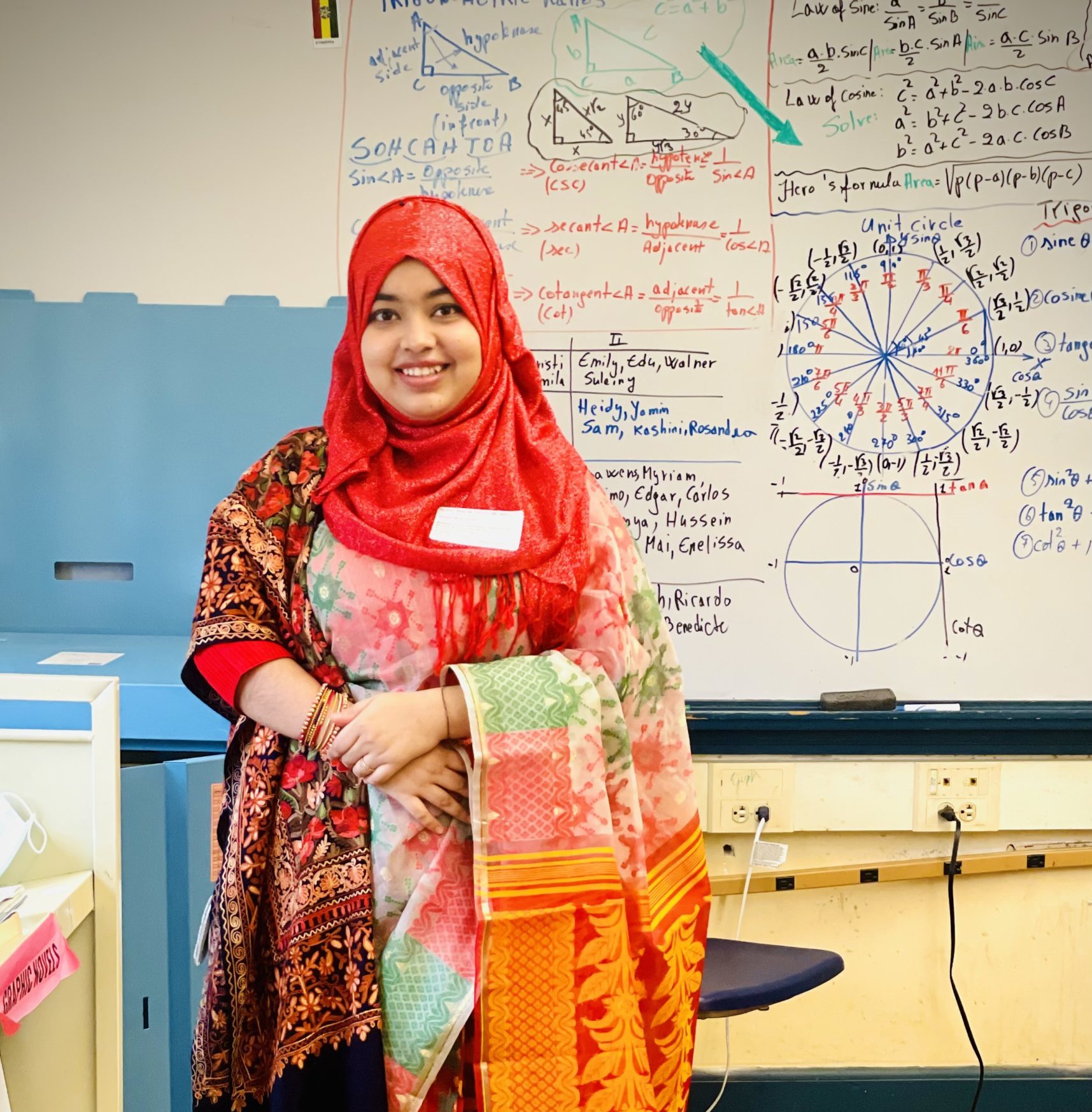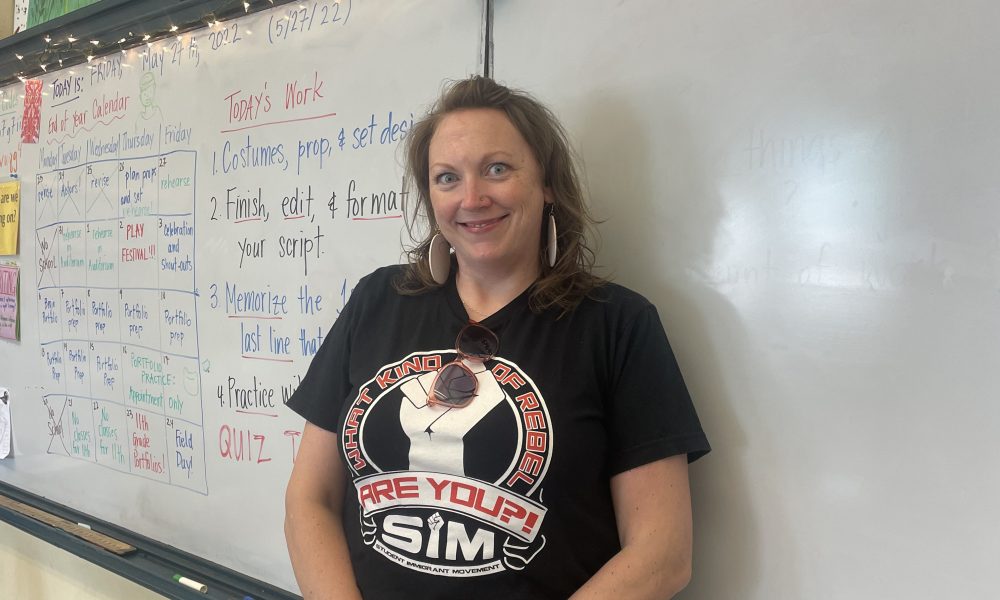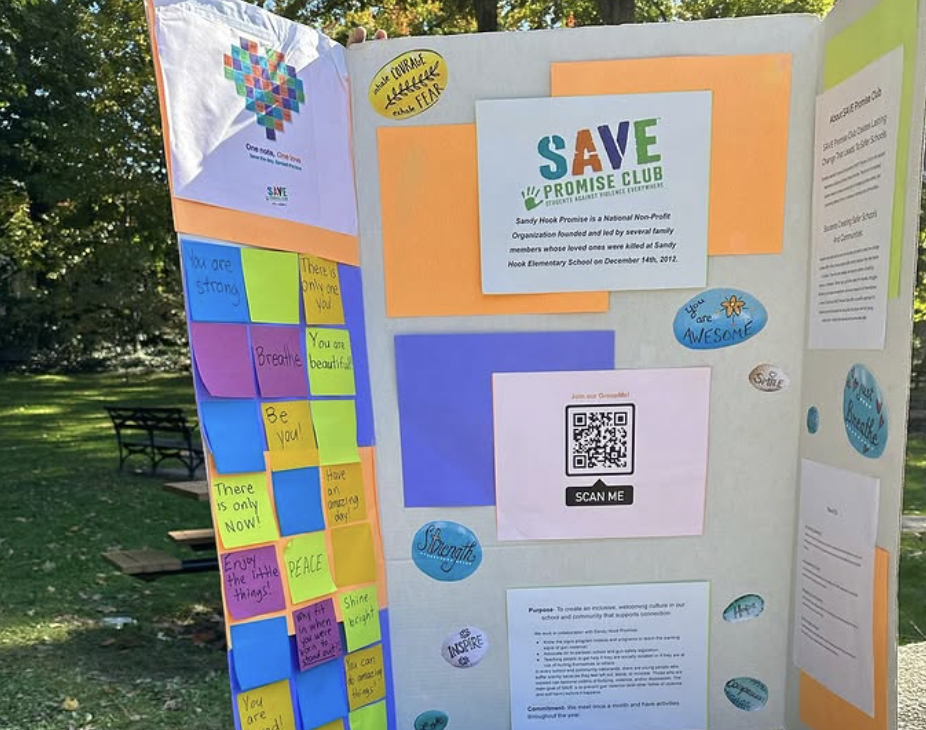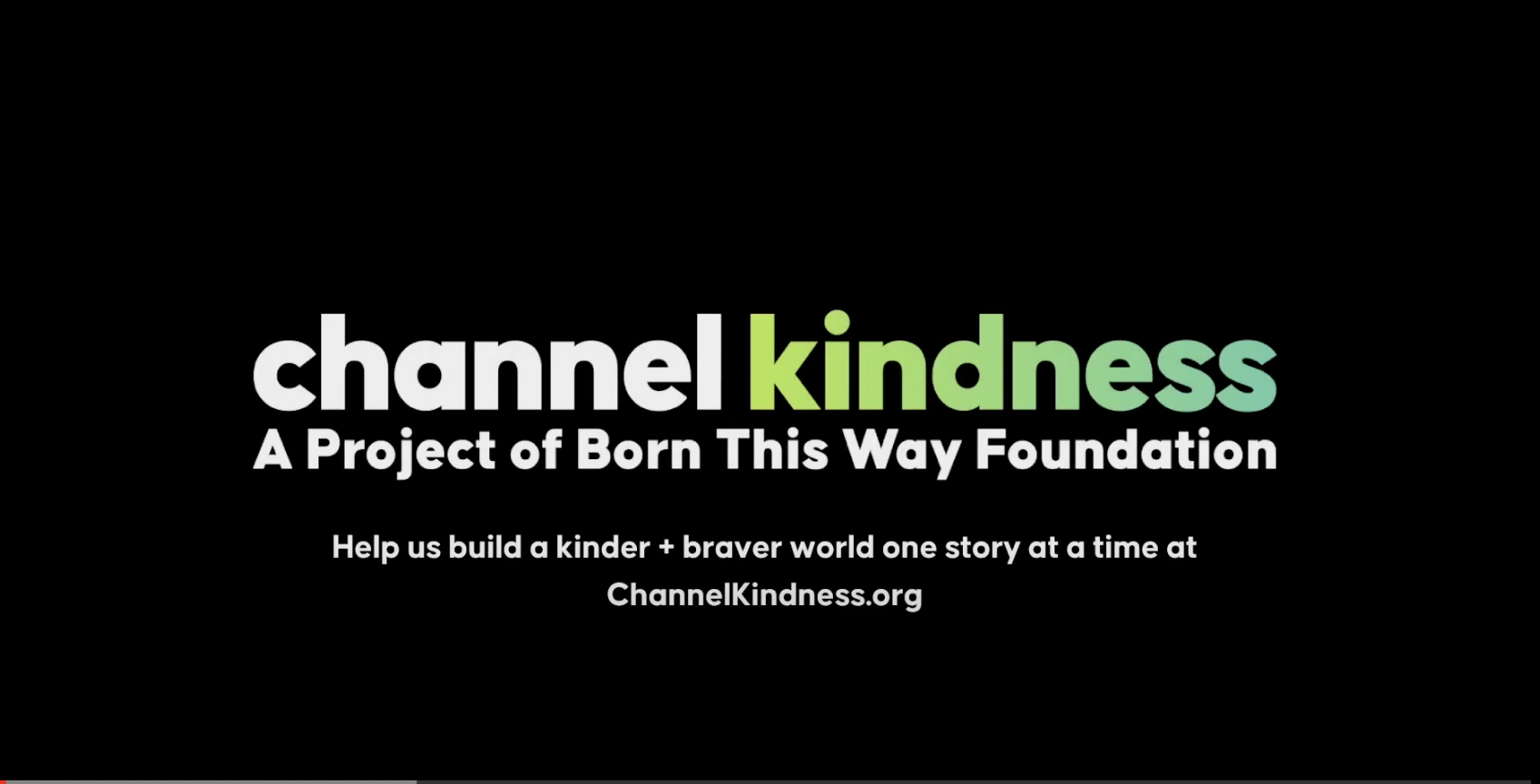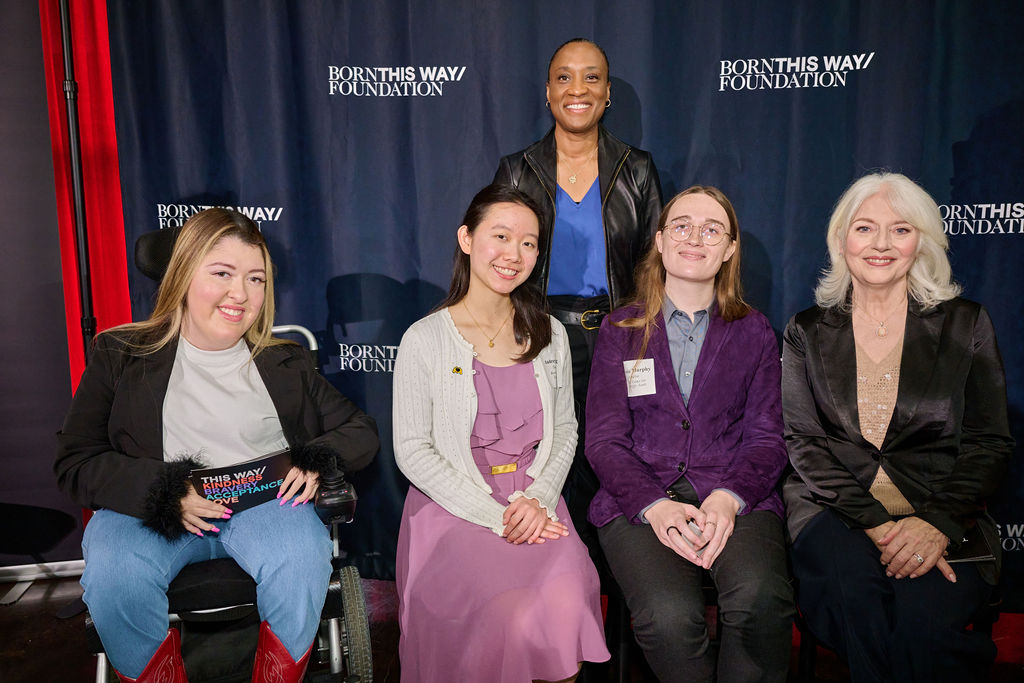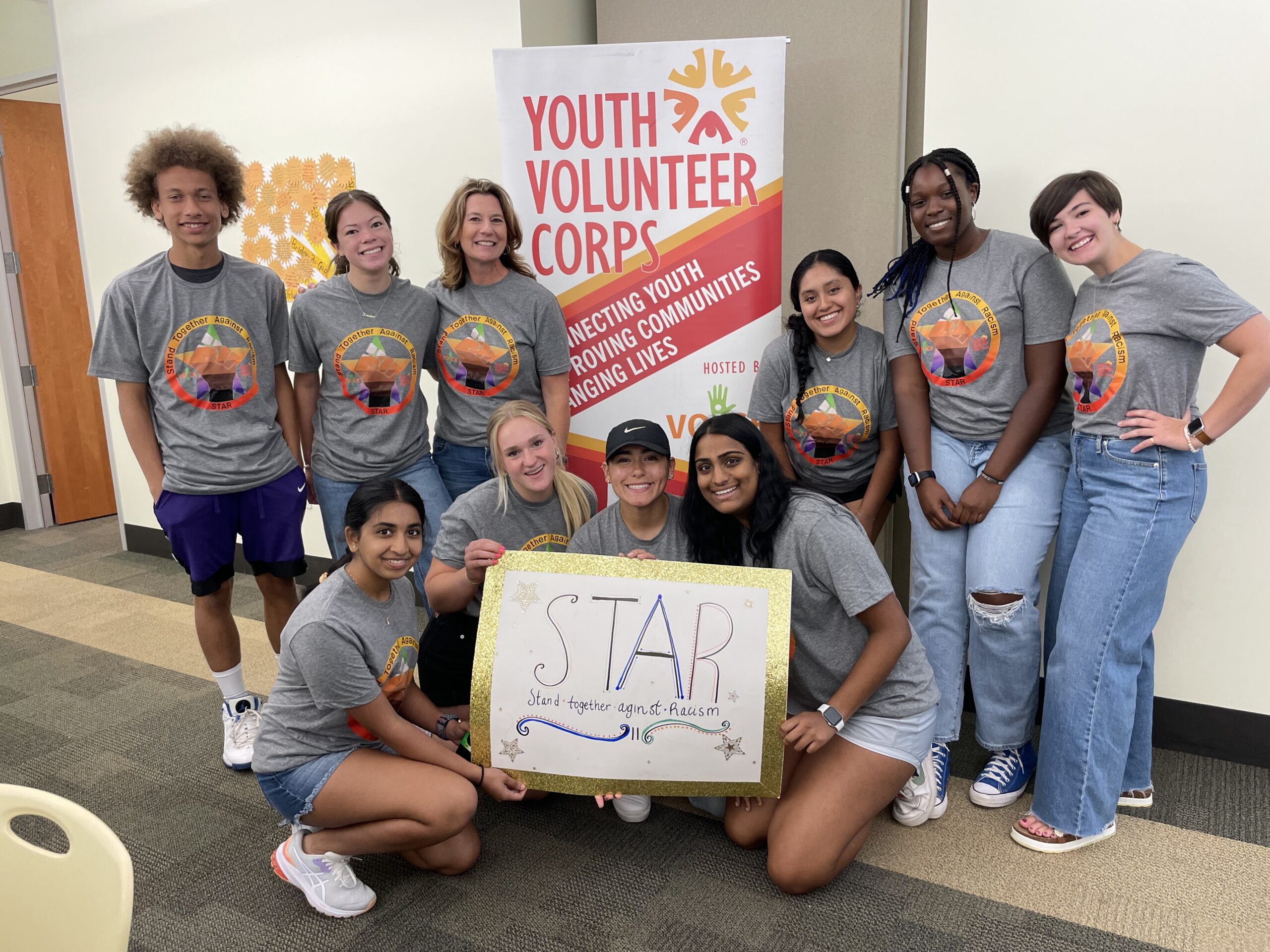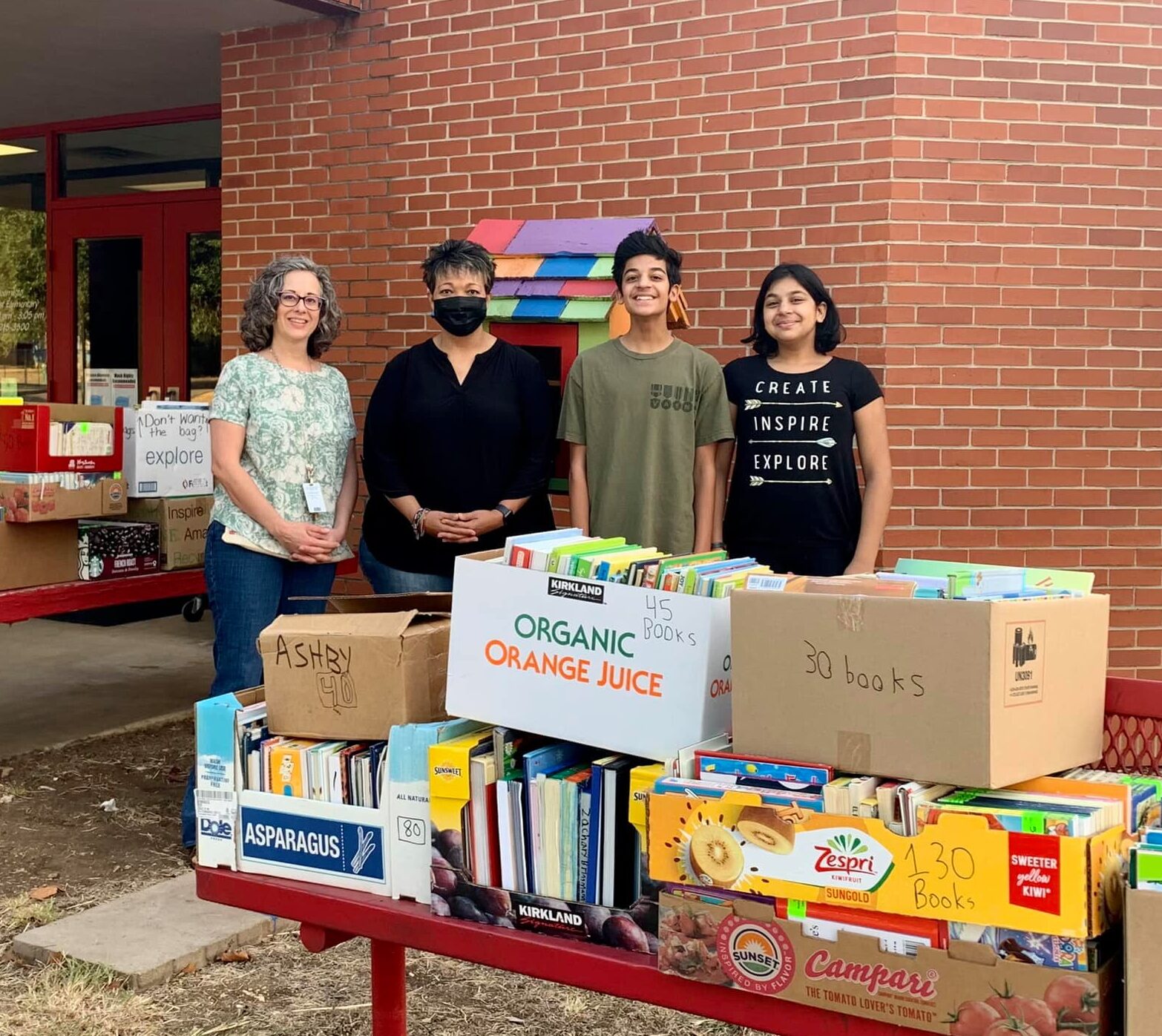*This story was originally published on teensinprint.com. Teens in Print is an inclusive WriteBoston program created to amplify the marginalized voices of eighth to twelfth grade Boston students.
“I am so excited for the interview today,” says Amanda Chaloupka with a smile as I enter her classroom. She was sitting on a chair and looking at her computer. We briefly exchange polite greetings and she asks, “Are you ready for the interview?” which prompted me to let her know that it was going to be a conversation more than an interview. Chaloupka then stands up from her chair and moves to the round table with two chairs, with her silver Macbook and green water bottle. After sitting at the table I noticed she was wearing big rings on her right-hand fingers which I have seen her wear since my junior year when she used to be my English teacher.
Amanda Chalopuka is an 11th-grade ESL teacher at BINcA (Boston International Newcomers Academy). She introduced herself with love and care, showing how proud she is to be a teacher at an international school.
Being a teacher is a profession that allows you to share your love, care, and knowledge with others. “I have been teaching for almost twelve years in BPS (Boston Public Schools), before that I was working for a magazine.” For such an amazing teacher it was a shock when she told me she “didn’t know I wanted to be a teacher until later in life.” This surprised me because for someone who didn’t want to be a teacher, she does her profession so well.
Chaloupka was born in a small town in Wisconsin, which she describes as “very white, very much the same, most of the people had regular jobs, but there was no diversity, no interest in learning about the outside world.” Her family took a vacation when she was 11 years old in Boston and she loved this city. “I remember telling my parents I wanted to live here,” she said. She fell in love with Boston because of the diversity, theaters, museums, and beauty of the city. After finishing school she went to college in Boston, and she really wanted to learn something new, so she studied English and German in college. “I always loved languages,” she said. As she wanted to become an English professor, she went to graduate school, and she learned that being a professor is not really about teaching, it’s about reading and writing, and “I didn’t feel passionate about it,” she said. She then worked in publishing for many years but “it didn’t give me very much meaning.”
So, she decided to return to teaching at the college level, and she taught students who didn’t have good enough English to start a college class yet, so they are taking classes for zero credit but still had to pay for it. “It felt really really unfair,” she said, and that’s what made her teach high school students to prepare them, so they don’t have to take the classes for zero credit. At the same time, she volunteered to teach elderly immigrants from Russia English and she felt love for them. “They became my grandparents, they loved me, supported me,” she added while looking at me. She thinks immigrants are strong and brave which made her teach immigrant students.
A teacher at international schools faces some advantages and disadvantages. Chaloupka first shared some of her advantages in teaching immigrant students, noting that she “get[s] to learn languages from my students, which I love.” Also, she learns about different cultures, their foods, and the world and its people. She also shared that she likes to teach immigrant students because it’s a chance to see the first base and growth of a person in a new country and it’s an opportunity to talk and share the same place with a diverse group of students. “It’s good to talk with Christian students from South America and also with Muslim students from Bangladesh,” she added looking right at me.
She had also shared some of the challenges of working with immigrant students: “they are many,” she added, letting out a tiny laugh. One of the main challenges is all the requirements of the state but she thinks they aren’t always fair, such as MCAS. Also, immigrant students have to help their families so they struggle to do jobs and that affects them academically. Another challenge is immigrants have different types of curricula in their countries and they have all the different levels in one room “but it’s a good challenge, I think,” she said in a serious mood.
Right before the closing part of the conversation, we talked about some opportunities and challenges for students and her concerns about that. She said it’s complicated to say clearly because “we have the opportunity to and the responsibility to teach the immigrant students what they need.” And a part of the problem is that “teacher programs don’t spend a lot of time on immigrant students,” she added. For example, teachers’ programs don’t spend enough time on how to teach immigrant students or how to plan lessons for them, and for that, a lot of teachers need to figure out how to teach their students but “that depends on the school and teachers, they all are different,” she added in a strong voice.
As a concern she shared, every student should have to learn any language, “I think American students should learn what it’s like for immigrant students to come to a completely different language and country,” she added. She also talked about how the system of the United States needs to see that English language learners are an asset and they are something that makes things better than we think. “We have to figure out another way to teach English,” Chaloupka added with a big smile and joyful eyes. She wants to change the mindset in schools so that schools feel lucky to have immigrant students.
At the very end of the wonderful interview with her, as an answer to the question why do you enjoy teaching, she replied, “I love it because every day surprises me, every day something new, and I love that.” She enjoys talking to young people, hearing their stories, their ideas, and learning from them. I loved how she shared her beliefs about immigrant students with strong confidence, noting that “I think immigrant students come with advantages that American born students do not.”
It is important for teachers to make sure that their students know how amazing they are being bilingual and bicultural. “I definitely want to be part of this with my students,” she said and that was the end of this conversation. I learned so many things from her since I was her student in the 11th grade and definitely this conversation will forever be a memorable part of my life. I will always remember how an American can love her students so much and how she is a role model for an immigrant teacher in the works.




